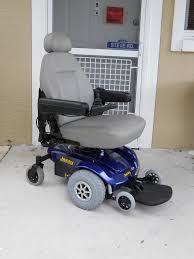Disabled people who require wheelchairs for mobility typically feel every bump in the road. As their chairs encounter obstacles others might consider insignificant — cracks and uneven surfaces — they experience jolts that can cause fatigue and, for some riders, cause pain that requires medication. The rough ride, according to Frog Legs Inc. (Ottumwa, IA, US), is traceable primarily to the wheelchair’s front casters.
Founded in 1997 by Mark Chelgren, the company started up after a chance encounter with a quadriplegic rugby team. A discussion about their wheelchairs led Chelgren to develop an alternative to the rigid casters used for the wheelchairs’ front wheels. Instead of fixed forks that require the wheel to move up and over obstructions — bouncing the rider in the process — Chelgren designed his forks with a patented pivot point and wedge-shaped shock absorber, fashioned from aluminum, that allows them to move smoothly over impediments in an arc path, functioning much like airplane landing gear.
In 2016, Chelgren felt he and Frog Legs could produce a better product by switching from machined aluminum to an even lighter alternative. “We are always being pushed to lighten our products. People with disabilities are greatly affected by any additional weight.” That effort led them to carbon fiber composites and to PlastiComp Inc. (Winona, MN, US), a supplier of long fiber-reinforced thermoplastics and technologies. PlastiComp provided not only the material, but also assistance to ensure the material change would be successful.
“We looked at a different type of manufacturing process than machining. Injection molding allowed us to have a much more complex shape, and carbon fiber composites really gave us advantages in what our design parameters could be,” relates Chelgren. Rather than settle for “black aluminum,” a new fork design was created, one that would be almost impossible to machine or forge in metal, he adds. Toward that end, Frog Legs took advantage of PlastiComp’s application design and performance analysis services throughout its product development cycle. “In my opinion, PlastiComp became our partner in making a better product,” says Chelgren. “It was a collaborative process — we weren’t going it alone.”
Read more: Composites comfort wheelchair travellers

